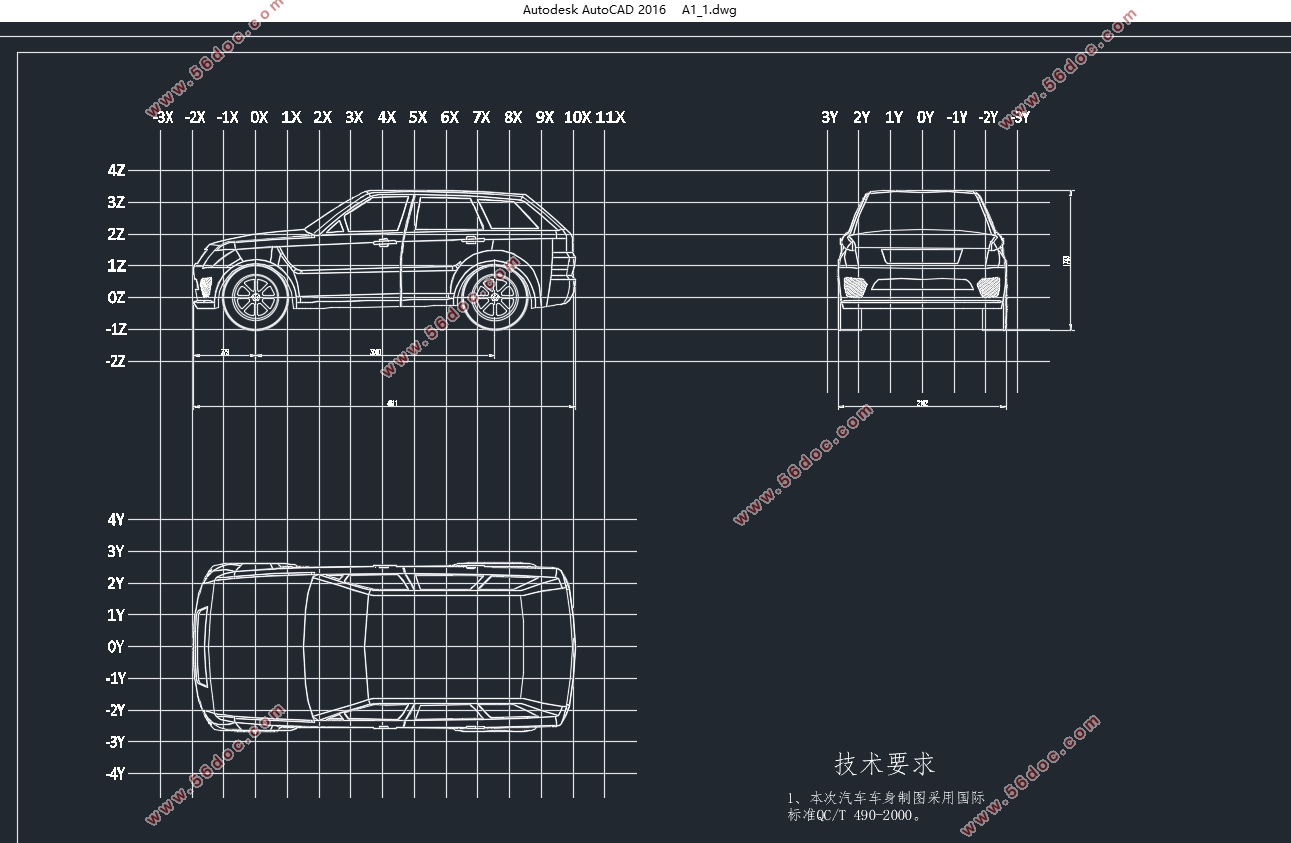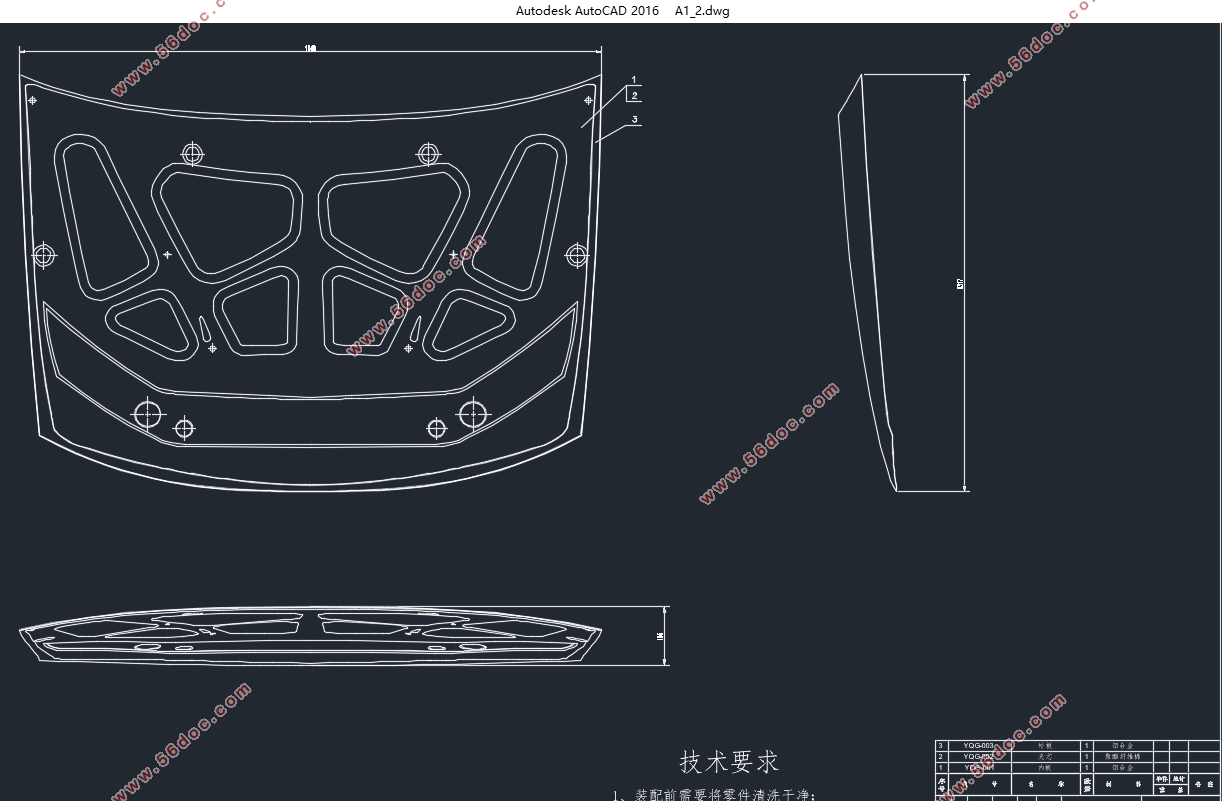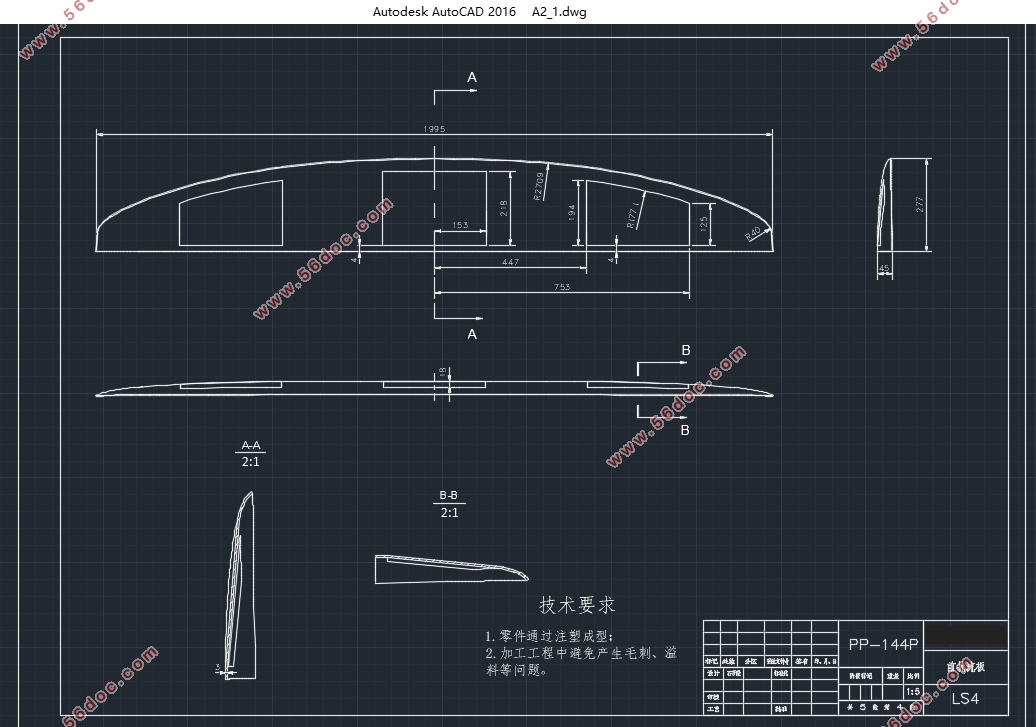低风阻跑车型SUV车身造型优化设计(含CAD图)
来源:56doc.com 资料编号:5D25255 资料等级:★★★★★ %E8%B5%84%E6%96%99%E7%BC%96%E5%8F%B7%EF%BC%9A5D25255
资料以网页介绍的为准,下载后不会有水印.资料仅供学习参考之用. 密 保 惠 帮助
资料介绍
低风阻跑车型SUV车身造型优化设计(含CAD图)(任务书,开题报告,论文说明书13000字,CAD图5张)
摘 要
随着人们对汽车的动力性与越野性需求不断增大,跑车型SUV逐渐进入人们的视线。针对传统SUV油耗高的问题,跑车型SUV工程师们采用空气动力学的方法优化汽车造型,降低跑车型SUV的风阻系数,提高车辆的燃油经济性。
空气动力学研究方法主要有三种,相对于简化计算的理论分析法与费时费钱的实验研究法,数值计算法较为准确且省时省力,适合于前期的研究,是较为广泛使用的方法。但是如果想要得到准确的风阻系数值,只能通过实验研究,利用风洞测试得到。
本文以某款跑车型SUV为研究对象,通过分块建模的方法建立其三维模型,通过处理模型表面、控制网格尺寸来绘制高质量的外流场网格,通过对比分析标准MIRA模型的仿真值与风洞试验值来确定初始条件和湍流模型。最后分析跑车型SUV模型的外流场,采用局部优化的方法对模型进行优化,并再次仿真进行对比。
通过本次研究可知:划分网格前需要对模型进行处理,而且需要根据曲面形状设置不同的网格的尺寸来提高网格质量;采用数值计算法时,湍流模型与初始条件的选择对仿真结果影响较大;局部优化法是一种较为实用,且能很大程度减低汽车空气阻力系数的方法。
关键词:跑车型SUV;空气动力学;MIRA模型;局部优化法
Abstract
With people’s increasing demand to the dynamic and cross-country ability of a car, Dynamic SUV is becoming more and more popular.In order to solve the problem of high fuel consumption in traditional SUV,the engineers of Dynamic SUV use aerodynamic research to optimize the automobile styling,which can help to decrease the drag coefficient and improve the fuel economy of the Dynamic SUV.
There are three ways to study the aerodynamic.Compared with the theoretical analysis which simplified the calculation,and the experimental study which costs lots of time and money,computational dynamics is more accurate and takes less time and money.So it is suitable for previous study and is widely used.But if you want to get the most precise data,you will need to do experimental study in the wind tunnel.
This paper is based on a Dynamic SUV model and do some research.We build the 3D model through the method of blocking modeling,draw high quality mesh through the method of adjusting model surface and mesh size,choose the best initial conditions and turbulence model through the method of comparing standard MIRA model’s simulation results with it’s wind tunnel results. Then we analyze the simulation results of the Dynamic SUV and use the method of local optimization to optimize the model and compare it with the previous one.
This study shows:In order to improve mesh’s quality,adjusting the model is needed before meshing,and one need to set different mesh size according to the surface shape;the select of initial condition and turbulence model plays an important role in computational dynamics;local optimization is a very useful way which can greatly decrease the drag coefficient of the car.
Key words:Dynamic SUV;Aerodynamics;MIRA model;Local optimization




目 录
摘 要 I
Abstract II
目 录 1
第1章 绪论 1
1.1 课题研究背景与意义 1
1.2 汽车空气动力学的研究方法 1
1.3 国内外研究现状 2
1.3.1 国内SUV空气动力学研究现状 2
1.3.2 国外SUV空气动力学研究现状 2
1.4 本论文的研究方法与主要内容 2
1.5 本章小结 3
第2章 汽车空气动力学的基本理论 4
2.1 汽车空气动力学的基本概念 4
2.2 汽车的气动六分力 4
2.3 气流运动的基本方程 5
2.3.1 质量守恒方程 5
2.3.2 动量守恒方程 7
2.3.3 能量守恒方程 8
2.4 湍流模型及其应用 8
2.5 本章小结 9
第3章 某跑车型SUV的外流场分析 10
3.1 汽车外流场的分析流程 10
3.2 车身模型的建立 11
3.3 计算域的确定 14
3.4 外流场网格的划分 15
3.4.1 计算域网格的划分 15
3.4.2 车身表面网格的划分 16
3.4.3 车轮接地处网格的划分 17
3.4.4 近壁面网格的划分 18
3.5 边界条件的确定 19
3.5.1 标准MIRA模型的参考 19
3.5.2 跑车型SUV边界条件的选择 22
3.6 仿真结果及分析 23
3.6.1 车身表面压力分析 24
3.6.2 车身周围流场分析 26
3.7 本章小结 27
第4章 跑车型SUV车身造型优化 29
4.1 汽车造型优化方法 29
4.1.1 全局优化法 29
4.1.2 局部优化法 29
4.2 跑车型SUV的优化方案 29
4.2.1 加装前扰流板 30
4.2.2 加装尾翼 31
4.2.3 加装侧裙 31
4.2.4 调整尾部形状 32
4.3 本章小结 33
第5章 总结 34
5.1 主要结论 34
5.2 研究的不足 34
5.3 研究展望 34
参考文献 35
附录A 37
致 谢 38
|









